Who discovered that the earth is round?
During the life of Columbus, people believed that the Earth was flat. They believed that huge monsters live in the Atlantic Ocean, capable of absorbing their ships, and there are terrible waterfalls in which their ships would perish. Columbus had to contend with these strange notions in order to convince people to sail with him. He was sure that the earth was round.
- Emma Miller Bolenius, author of American textbooks, 1919
One of the longest-lived myths, with the faith in which children grow up . ], is that Columbus was the only one of the people of his time who believed that the Earth was round. The rest believed it was flat. “How brave the navigators of 1492 were to be,” you think, “to go to the ends of the world and not be afraid to fall off of it!”

Indeed, there are many ancient records of the earth in the form of a disk. And if from all the celestial bodies you would know only the Sun and the Moon, you could come to the same conclusion on your own.
If you go out at sunset, a day or two after the new moon, you can see something like the following.

The thin crescent of the moon, the lighted part of which coincides with the part of the sphere that could be illuminated by the sun.
')
If you had the scientific thinking and curiosity, you could go out on the following days and watch what happens next.
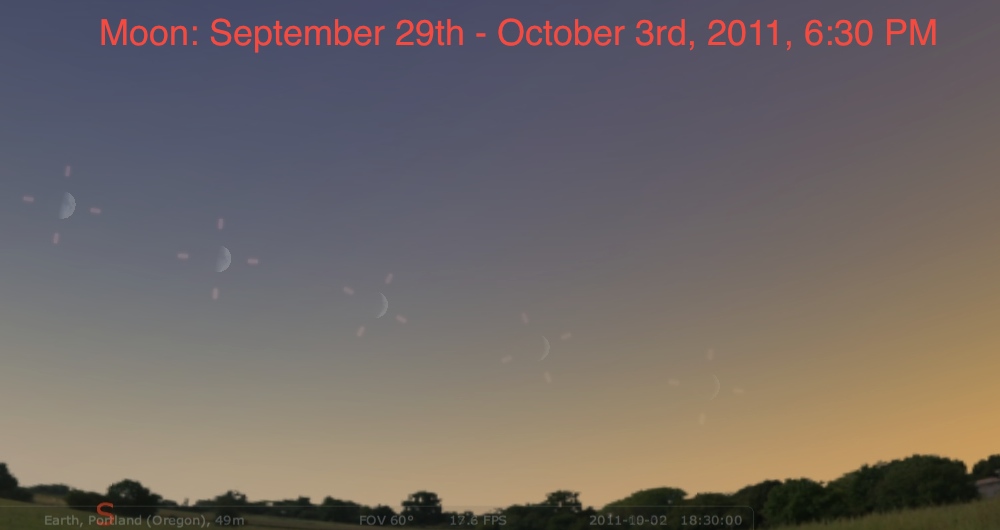
The moon not only changes its position by about 12 degrees every night, moving farther from the sun, but it also lights up more and more! You could (fairly) conclude that the moon revolves around the earth, and that the phase change is associated with the light of the sun illuminating different parts of the round moon.
Ancient and modern views on the phases of the moon in this match.
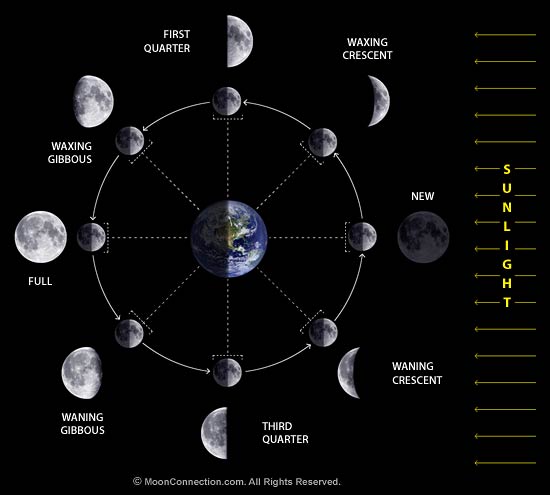
But approximately twice a year, during the full moon, something happens that allows us to determine the shape of the Earth: a lunar eclipse! During a full moon, the Earth passes between the Sun and the Moon, and the Earth's shadow becomes visible on the surface of the Moon.
And if you look at this shadow, it becomes clear that it is bent and has a disk shape!
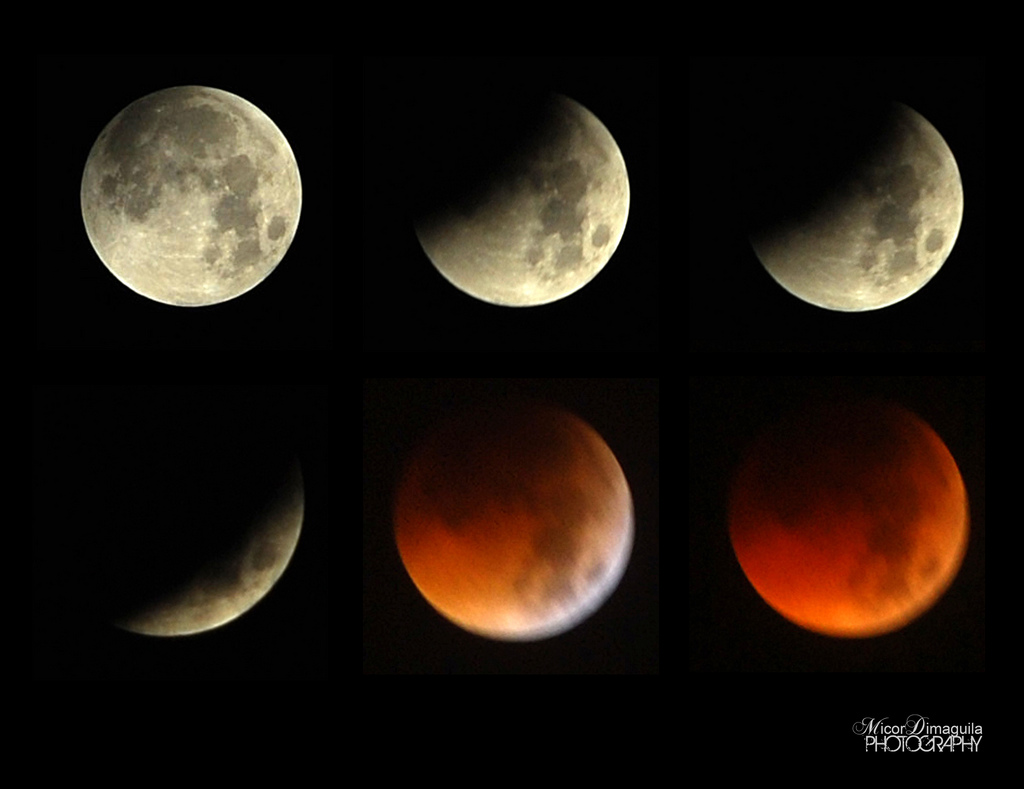
True, it is impossible to deduce from this whether the Earth is a flat disk or a round sphere. One can only see that the shadow of the earth is round.
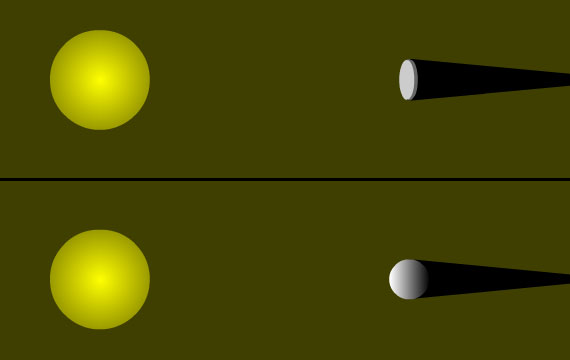
But, despite the popular myth, the question of the shape of the Earth was decided not in the XV or XVI centuries (when Magellan made a world tour), but about 2000 years ago, in the ancient world. And what is most surprising, it only required the sun.

If you track the path of the Sun across the daytime sky, living in the northern hemisphere, you will notice that it rises in the eastern part of the sky, rises to a maximum in the south, and then declines and sets in the west. And so on any day of the year.
But the paths throughout the year are slightly different. The sun rises much higher and shines for more hours in summer, and rises lower in winter and shines less. For illustration, look at the photo of the solar path, made during the winter solstice in Alaska.

If you build the Sun's path along the daytime sky, you will find that the lowest path, the shortest in time, falls on the winter solstice - usually December 21 - and the highest path (and the longest) happens during the summer solstice, usually 21 June.
If you make a camera capable of photographing the path of the Sun across the sky during the year, you will have a set of arcs, of which the highest and longest is made at the summer solstice, and the lowest and shortest - at the winter solstice.

In the ancient world, the greatest scientists of Egypt, Greece and the entire Mediterranean worked in the Alexandrian Library. One of them was the ancient Greek astronomer Eratosthenes.
Living in Alexandria, Eratosthenes received amazing letters from the city of Siena in Egypt. There, in particular, it was said that on the day of the summer solstice:
The shadow of a man looking into a deep well closes the reflection of the sun at noon.
In other words, the sun will be directly overhead, not deviating a degree to the south, north, east, or west. And if you had a completely vertical object, it would not cast shadows.

But Eratosthenes knew that was not the case in Alexandria. The sun approaches the highest point at noon during the summer solstice in Alexandria closer than on other days, but vertical objects cast a shadow there.
And like any good scientist, Eratosthenes set up an experiment. By measuring the length of the shadow cast by the vertical stick at the summer solstice, he was able to measure the angle between the sun and the vertical direction in Alexandria.
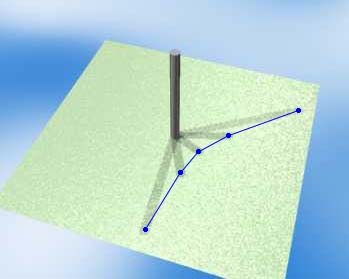
He got one fiftieth circle, or 7.2 degrees. But at the same time in Siena, the angle between the Sun and the vertical stick was zero degrees! Why could this happen? Perhaps due to brilliant insight, Eratosthenes realized that the Sun's rays can be parallel, and the Earth curved!

If then he could find out the distance from Alexandria to Siena, knowing the difference in angles, he could calculate the circumference of the Earth! If Eratosthenes had been a graduate student supervisor, he would have sent him on his way to measure distance!
But instead, he had to rely on the then known distance between the two cities. And the most accurate measurement method was then ...
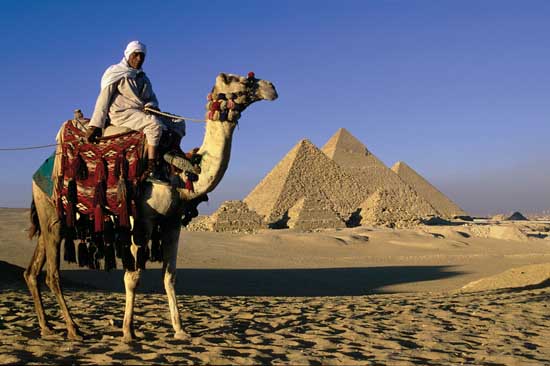
Ride on a camel. You can understand the criticism of such accuracy. And yet, he considered the distance between Siena and Alexandria to be 5000 stades. The only question is the length of the stage. The answer depends on whether Eratosthenes, a Greek who lived in Egypt, used the Attic or Egyptian stages, as historians still argue about. Attic stages were used more often, and its length is 185 meters. Using this value, you can get the circumference of the Earth equal to 46 620 km, which is 16% more than the real value.
But the Egyptian stages is only 157.5 meters, and it is possible that he was meant by Eratosthenes. In this case, it will turn out 39 375, which differs from the current value of 40 041 km by only 2%!

Regardless of the figures, Eratosthenes became the first geographer in the world, invented the concepts of latitude and longitude, used to this day, and built the first models and maps based on a spherical Earth.
And although a lot of things have been lost over the millennia that have passed since then, ideas about the spherical Earth and knowledge about its approximate circumference have not disappeared. Today, anyone can repeat the same experiment with two places at the same longitude, and by measuring the length of the shadows, get the circumference of the Earth! Not bad, considering that the first direct photographic proof of the curvature of the Earth will be obtained only in 1946!

Knowing the shape and size of the Earth, as early as 240 BC, we were able to figure out many wonderful things, including the size and distance to the moon! Therefore, let us pay tribute to Eratosthenes for the discovery that the Earth is round and for the first accurate calculation of its size!
If Columbus needs to memorize for something in connection with the size and shape of the Earth, it is because he used too small values for its circumference! His estimates of the distances, with the help of which he convinced that the ship could pass from Europe directly to India (if there were no Americas), were incredibly small! And if the Americas were not, they would die of starvation with the team before reaching Asia!
Source: https://habr.com/ru/post/398591/
All Articles